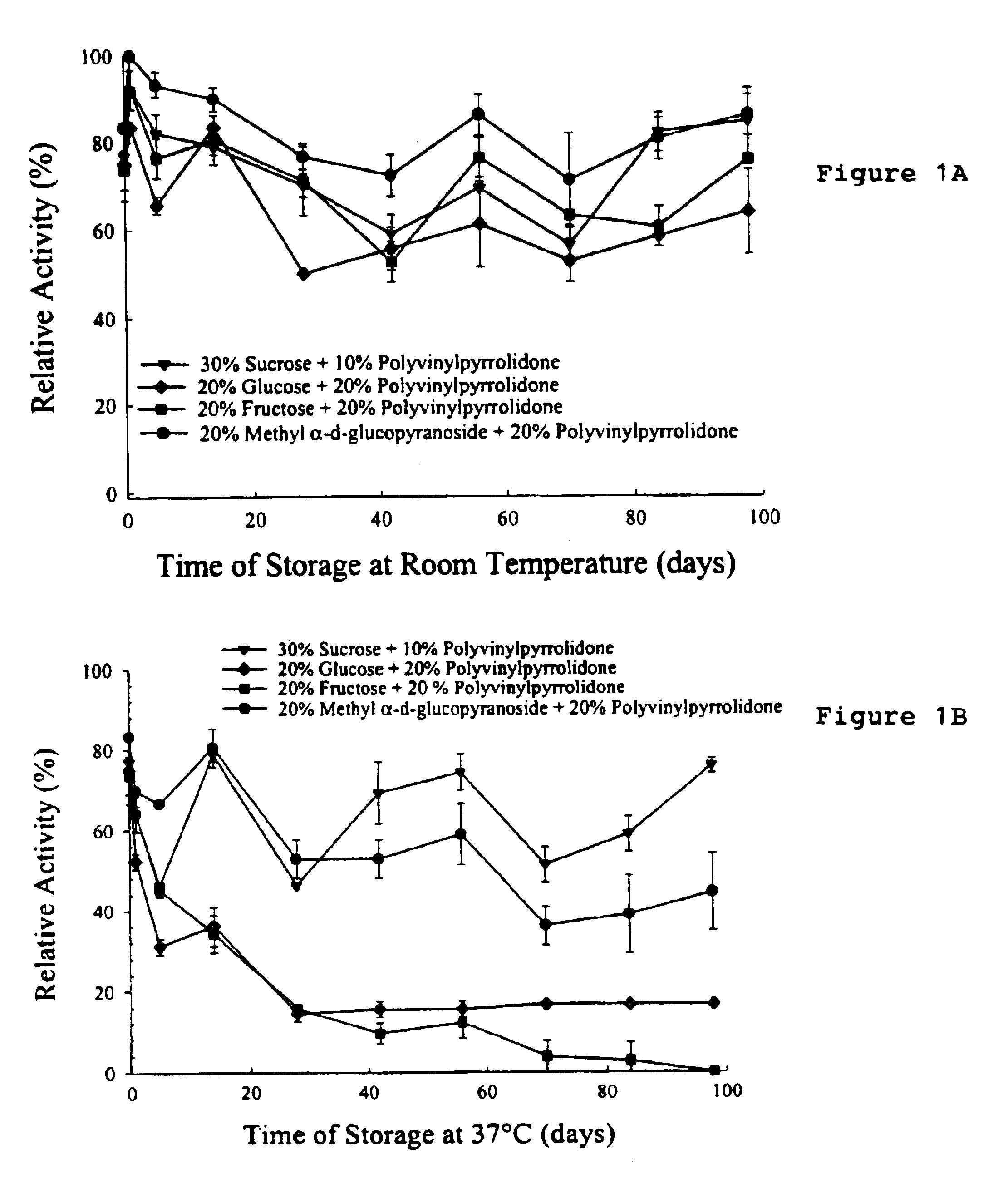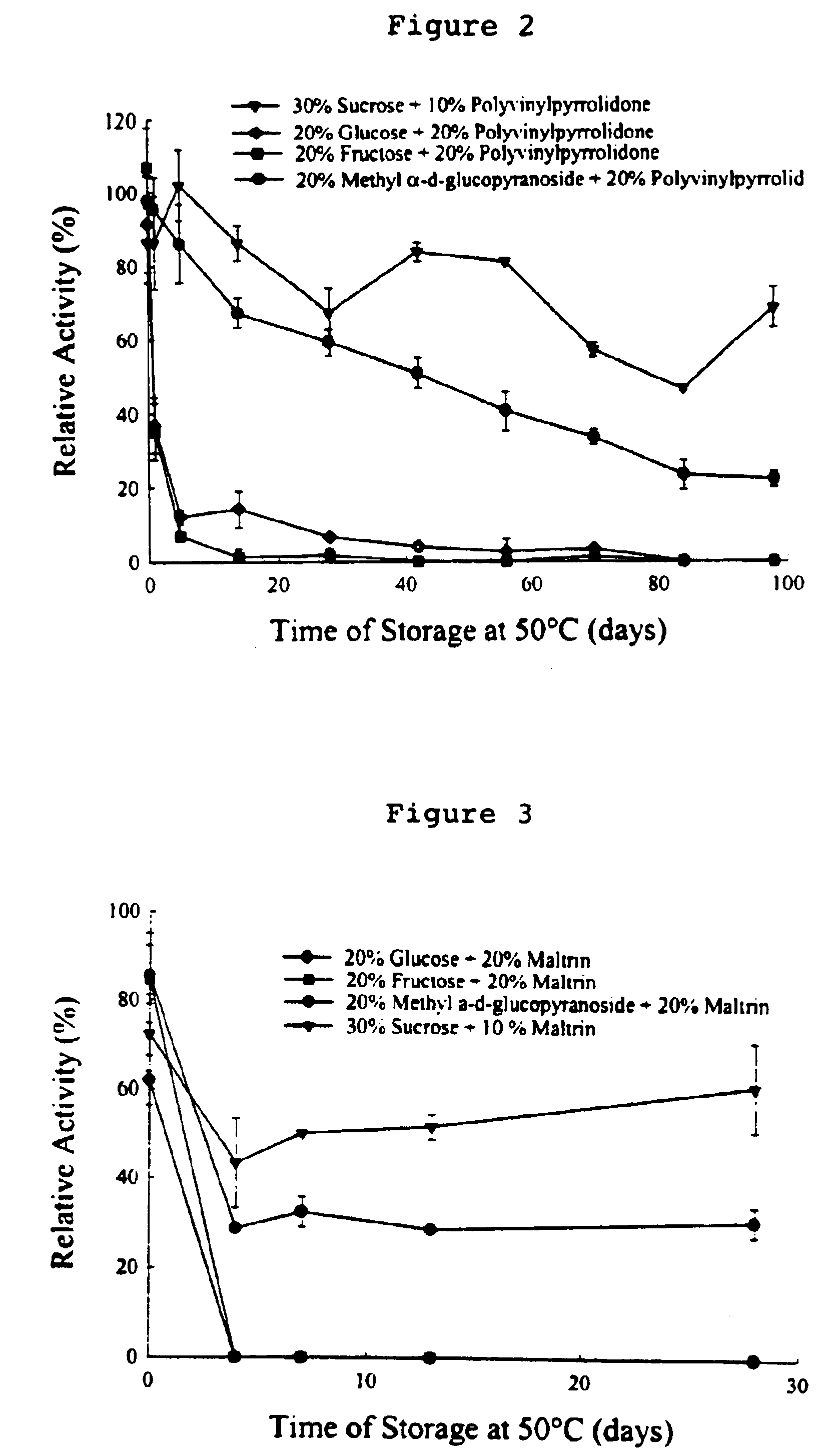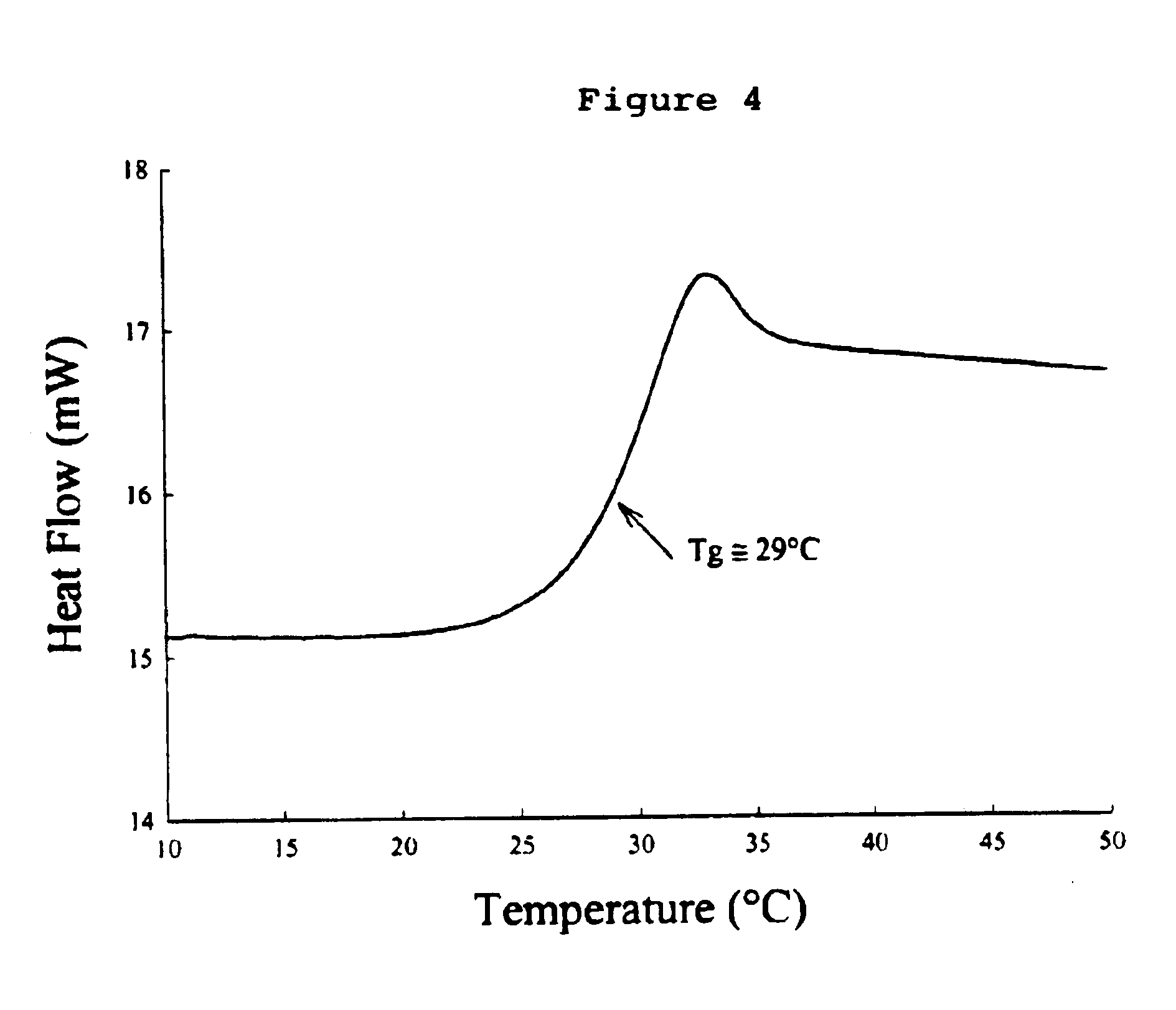Formulation of preservation mixtures containing sensitive biologicals to be stabilized for ambient temperature storage by drying
a technology of biologicals and preservation mixtures, which is applied in the direction of microorganisms, chemical/physical/physicochemical processes, and diseases, can solve the problems of unprotected biomolecules, viruses and cells, and many bioactive materials sensitive to degradation and loss of activity and/or viability in aqueous solutions, and can not be stored in ambient conditions for a long time. , the drying of unprotected biomolecules, viruses and cells, and the freezing of such
- Summary
- Abstract
- Description
- Claims
- Application Information
AI Technical Summary
Benefits of technology
Problems solved by technology
Method used
Image
Examples
example 1
The effect of reducing and non-reducing sugars and PVP on Isocitrate Dehydrogenase (ICDH) was studied during storage at room temperature and 37° C. This experiment is designed to test the reducing capability of additives such as sugars. This reducing property is characterized by the capability to produce the Maillard reaction or enzymatic browning reaction. For monosaccharides or simple sugars, the glycosylic hydroxyl group or OH on the αC is susceptible to chemically react with amino residues containing NH or NH2, e.g. lysine, asparagine.
The enzyme ICDH was formulated in 50% glycerol. The following preservation solutions were used: (1) 30% sucrose+10% PVP solution, (2) 20% glucose+20% PVP solution, (3) 20% fructose+20% PVP solution, and (4) 20% methyl α-d-glucopyranoside+10% PVP solution.
ICDH (200 μl) was dialyzed in cold 0.1 M Tris HCl for 5 hours at 15-17° C. The buffer was stirred gently so that the small molecules were evenly dispersed throughout the solution. After dialysis, t...
example 2
The effect of reducing and non-reducing sugars and PVP on Isocitrate Dehydrogenase (ICDH) was studied during storage at 50° C. This experiment is designed to test the reducing capability of additives such as sugars. This reducing property is characterized by the capability to produce the Maillard reaction or enzymatic browning reaction. For monosaccharides or simple sugars, the glycosylic hydroxyl group or OH on the αC is susceptible to chemically react with amino residues containing NH or NH2, e.g. lysine, asparagine.
The enzyme ICDH was formulated in 50% glycerol. The following preservation solutions were used: (1) 30% sucrose+10% PVP solution, (2) 20% glucose+20% PVP solution, (3) 20% fructose+20% PVP solution, and (4) 20% methyl α-d-glucopyranoside+10% PVP solution.
ICDH (200 μl) was dialyzed in cold 0.1 M Tris HCl for 5 hours at 15-17° C. The buffer was stirred gently so that the small molecules were evenly dispersed throughout the solution. After dialysis, the ICDH (total volume...
example 3
The effect of reducing and non-reducing sugars and maltrin on Isocitrate Dehydrogenase (ICDH) was studied during storage at 50° C. This experiment is designed to test the reducing capability of additives such as sugars. This reducing property is characterized by the capability to produce the Maillard reaction or enzymatic browning reaction. For monosaccharides or simple sugars, the glycosylic hydroxyl group or OH on the αC is susceptible to chemically react with amino residues containing NH or NH2, e.g. lysine, asparagine.
The enzyme ICDH was formulated in 50% glycerol. The following preservation solutions were used: (1) 30% sucrose+10% maltrin solution, (2) 20% glucose+20% maltrin solution, (3) 20% fructose+20% maltrin solution, and (4) 20% methyl α-d-glucopyranoside+10% maltrin solution.
ICDH (200 μl) was dialyzed in cold 0.1 M Tris HCl for 5 hours at 15-17° C. The buffer was stirred gently so that the small molecules were evenly dispersed throughout the solution. After dialysis, th...
PUM
| Property | Measurement | Unit |
|---|---|---|
| Temperature | aaaaa | aaaaa |
| Fraction | aaaaa | aaaaa |
| Fraction | aaaaa | aaaaa |
Abstract
Description
Claims
Application Information
 Login to View More
Login to View More - R&D
- Intellectual Property
- Life Sciences
- Materials
- Tech Scout
- Unparalleled Data Quality
- Higher Quality Content
- 60% Fewer Hallucinations
Browse by: Latest US Patents, China's latest patents, Technical Efficacy Thesaurus, Application Domain, Technology Topic, Popular Technical Reports.
© 2025 PatSnap. All rights reserved.Legal|Privacy policy|Modern Slavery Act Transparency Statement|Sitemap|About US| Contact US: help@patsnap.com



